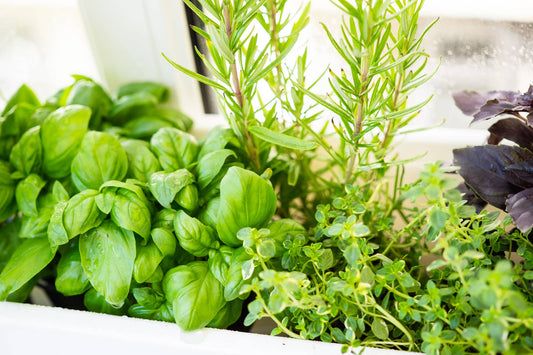Hydroponic gardening is revolutionizing the way we grow plants, offering a clean, efficient, and highly productive method to cultivate fruits, vegetables, and herbs indoors. However, setting up a successful hydroponic system requires the right tools and equipment. Whether you’re a complete beginner or looking to optimize your setup, this guide breaks down the essential hydroponic equipment into three key categories: the basics, useful extras, and indoor growing essentials.
The Basics: Must-Have Tools for Every Hydroponic System
For those starting their hydroponic journey, a few fundamental tools will set you up for success. These items ensure your plants receive the right nutrients, pH balance, and environmental conditions for healthy growth.
All-in-One Mineral Fertilizer
Plants in hydroponic systems do not get nutrients from the soil, meaning they rely entirely on a nutrient-rich solution. A high-quality all-in-one mineral fertilizer like ‘HydroLife’ provides essential macro and microelements, ensuring your plants receive balanced nutrition without complex measuring and mixing.
EC/PPM Meter
Nutrient concentration is a critical factor in hydroponic gardening. An EC (electrical conductivity) meter or a PPM (parts per million) meter helps monitor the strength of your nutrient solution. This prevents underfeeding or overfeeding, both of which can affect plant health.
pH Balancing Solutions & pH Meter
Maintaining the correct pH level is crucial in hydroponics because it directly affects nutrient absorption. pH balancing solutions (pH up and pH down) allow you to fine-tune acidity levels, ensuring your plants can absorb nutrients efficiently. A pH meter, whether digital or chemical (using liquid indicators or test strips), is essential for regular monitoring.
Extras: Advanced Tools for a More Efficient Setup
Once you’ve mastered the basics, adding some additional tools can help improve plant health, maximize yield, and prevent common hydroponic issues.
CAL-MAG Additive
Many hydroponic plants, particularly tomatoes and peppers, require additional calcium and magnesium to prevent nutrient deficiencies. A CAL-MAG additive ensures strong cell development, reducing issues like leaf curling or blossom end rot.
Hydrogen Peroxide
Water cleanliness is vital in hydroponic systems. Hydrogen peroxide helps disinfect reservoirs, tubing, and growing media, preventing the buildup of bacteria, algae, and fungi. Handle it carefully and use gloves when applying it.
Trellis & Plant Supports
Plants like tomatoes, cucumbers, and climbing vines benefit from a trellis or plant support system. These structures prevent plant stress by helping support the weight of growing fruits, improving air circulation, and reducing the risk of disease.
Hydroponic Germination Kit
Starting seeds successfully in hydroponics requires controlled conditions. A hydroponic germination kit ensures high seedling success rates by providing optimal moisture, aeration, and light exposure.
Yellow Sticky Traps
While hydroponic systems minimize pest infestations, certain insects like aphids and fungus gnats can still become a problem. Yellow sticky traps help catch pests early, preventing them from damaging your plants.
For Indoor Growing: Creating the Ideal Environment
Indoor hydroponic systems require precise environmental control to mimic the optimal outdoor growing conditions. However, if you are growing hydroponic plants in a normal indoor environment, such as your home, and cultivating vegetables that naturally thrive in that setting, you do not need to regulate CO2 levels, humidity, or temperature. The natural home environment is generally sufficient for plant growth.
However, if you are growing plants in a sealed environment where they are isolated from normal air circulation and exist in a controlled space with multiple plants, precise regulation of temperature, humidity, and CO2 levels becomes essential. In such cases, the following tools help maintain an optimal growing climate:
Grow Lights
One of the most critical components of an indoor hydroponic system is lighting. Grow lights with the correct PAR (Photosynthetically Active Radiation) and PPF (Photosynthetic Photon Flux) provide plants with the necessary energy for photosynthesis. Choose LED grow lights with adjustable spectrums for different growth stages.
Ventilation System
Adequate air circulation prevents mold growth and strengthens plant stems. A ventilation system, including small fans or exhaust vents, helps maintain fresh airflow within enclosed spaces.
Humidifier/Dehumidifier
If growing in a fully sealed environment, a humidifier can add moisture to dry spaces, while a dehumidifier removes excess humidity to maintain ideal plant conditions.
Temperature Control
For sealed spaces where plants do not benefit from ambient household temperatures, heating and cooling systems like space heaters, cooling fans, or air conditioners help maintain stable growing conditions.
CO2 Filter
In a controlled environment, CO2 filters help regulate carbon dioxide (CO2) levels, optimizing plant photosynthesis and accelerating growth.
Final Thoughts: Setting Up for Success
Investing in the right hydroponic equipment ensures a smooth growing experience and maximizes your yields. Beginners should start with basic essentials like nutrient solutions, pH meters, and EC/PPM meters. As you gain experience, adding extras like plant supports and specialized nutrients will optimize plant health. Finally, environmental controls are only necessary for growers using a sealed, high-density hydroponic setup. If you are growing plants within your home’s natural environment, maintaining a simple setup with proper lighting and nutrients will be enough for a thriving hydroponic garden.
By equipping yourself with the right tools, you can cultivate a thriving hydroponic garden and enjoy fresh, homegrown produce all year round!




